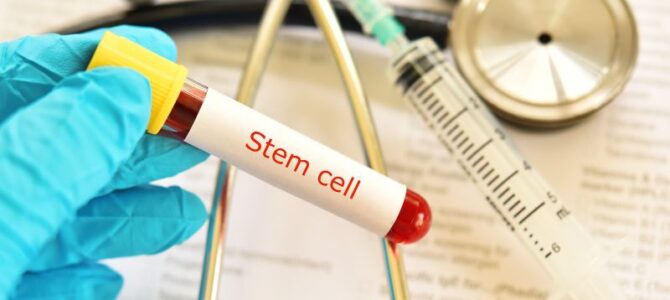Cord stem cell banking, also known as cord blood banking, is a revolutionary medical practice that has gained significant attention in recent years. The process involves collecting and preserving stem cells from the umbilical cord of a newborn baby. These stem cells have unique properties that make them invaluable for potential life-saving treatments and regenerative medicine. In this article, we will delve into the world of cord stem cell banking, its benefits, and why it is an essential consideration for expectant parents.
1. What is Cord Stem Cell Banking?
Cord stem cell banking is the process of collecting and preserving stem cells from the umbilical cord and placenta of a newborn baby. These stem cells, also known as hematopoietic stem cells, have the remarkable ability to develop into various types of blood cells, such as red blood cells, white blood cells, and platelets. The collection process is simple, painless, and non-invasive, posing no risk to either the mother or the baby.
2. The Science Behind Cord Stem Cells
Cord stem cells are rich in hematopoietic stem cells, which are vital for the formation of blood and immune cells. They also contain mesenchymal stem cells, which have the ability to differentiate into various types of tissues, including bone, cartilage, and fat cells. These properties make cord stem cells highly valuable for medical treatments and regenerative therapies.
3. Benefits of Cord Stem Cell Banking
3.1. Potential Life-Saving Treatments
Cord stem cells have shown remarkable success in treating various life-threatening diseases, including leukemia, lymphoma, and other blood-related disorders. When used in stem cell transplants, they can replace damaged or diseased cells, providing a lifeline for patients with critical medical conditions.
3.2. Reduced Risk of Transplant Rejection
Stem cell transplants using cord stem cells from the baby’s own umbilical cord blood significantly reduce the risk of transplant rejection. The body recognizes these cells as its own, minimizing the need for immunosuppressive drugs and increasing the success rate of the transplant.
3.3. Sibling Compatibility
Cord stem cells are a 50% match for each of the baby’s siblings, making them a potential source of treatment for other family members who may have certain genetic conditions or diseases. This provides an additional layer of medical security for the entire family.
3.4. Regenerative Medicine
Beyond their application in transplant medicine, cord stem cells hold immense promise in regenerative medicine. They have the capacity to repair and regenerate damaged tissues and organs, offering hope for conditions that were once considered untreatable.
3.5. Ethical and Non-Controversial Source
Unlike embryonic stem cells, which are obtained from embryos, cord stem cells are collected from the umbilical cord after birth, posing no ethical dilemmas or controversies. This makes cord stem cell banking a widely accepted and morally sound option for parents.
4. The Process of Cord Stem Cell Banking
The process of cord stem cell banking is straightforward and typically follows these steps:
4.1. Pre-Registration
Expectant parents interested in cord stem cell banking pre-register with a reputable banking facility during the pregnancy. The banking facility provides information about the process, costs, and any necessary paperwork.
4.2. Collection at Birth
When the baby is born, medical professionals collect the umbilical cord blood and placenta after the delivery of the baby. The collection process is painless and does not interfere with the birthing process.
4.3. Transportation and Storage
The collected cord blood and tissue are transported to the stem cell bank’s laboratory. There, they undergo processing and testing to ensure cell viability and safety. The stem cells are then cryogenically frozen and stored in specialized containers at ultra-low temperatures to preserve their quality.
4.4. Long-Term Storage
Cord stem cells can be stored for an extended period, usually decades, without losing their viability. Reputable stem cell banks offer secure and monitored storage facilities, providing peace of mind to parents for the long-term preservation of their child’s stem cells.
5. The Cost of Cord Stem Cell Banking
The cost of cord stem cell banking varies depending on the banking facility, the type of storage plan selected, and any additional services offered. While the initial cost may be a consideration for some families, it is essential to view it as a long-term investment in the health and well-being of the child and potentially the entire family.
6. Conclusion
Cord stem cell banking is a game-changing medical advancement that offers the potential for life-saving treatments and regenerative therapies. The ease of collection, ethical considerations, and reduced risk of transplant rejection make cord stem cell banking an attractive option for expectant parents. By banking their baby’s cord stem cells, parents can take proactive measures to secure the future health and well-being of their child, providing a valuable resource that may offer medical solutions and hope for years to come.
FAQs
1. Is cord stem cell banking safe for both the baby and the mother?
Yes, cord stem cell banking is a safe and non-invasive procedure for both the baby and the mother. The collection process occurs after the baby’s birth, posing no risk to the birthing process or the health of the baby and the mother.
2. How long can cord stem cells be stored for?
Cord stem cells can be stored for decades without losing their viability. Advanced cryopreservation techniques ensure the long-term preservation of these cells.
3. Can cord stem cells be used for treating other family members?
Yes, cord stem cells are a 50% match for each of the baby’s siblings, making them a potential source of treatment for other family members who may have certain genetic conditions or diseases.
4. Is cord stem cell banking covered by insurance?
In most cases, cord stem cell banking is not covered by insurance. However, some flexible spending accounts and health savings accounts may allow the use of pre-tax dollars for stem cell banking expenses.

